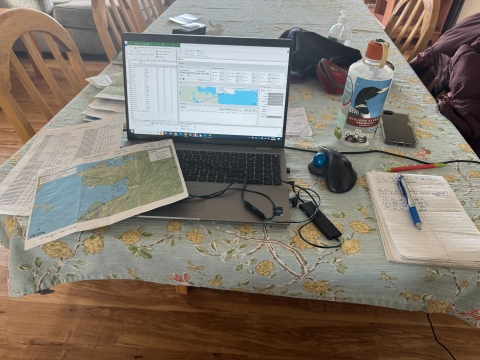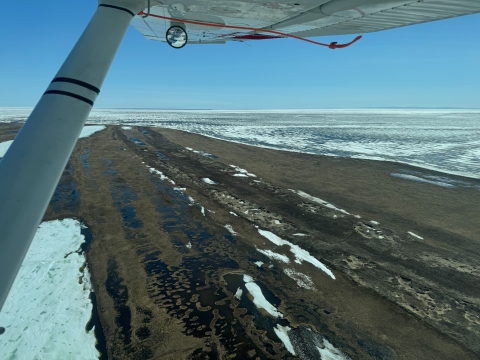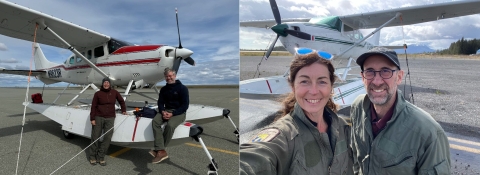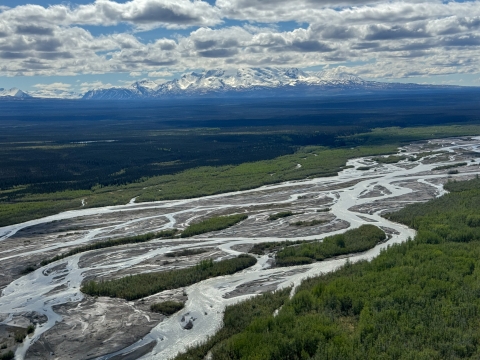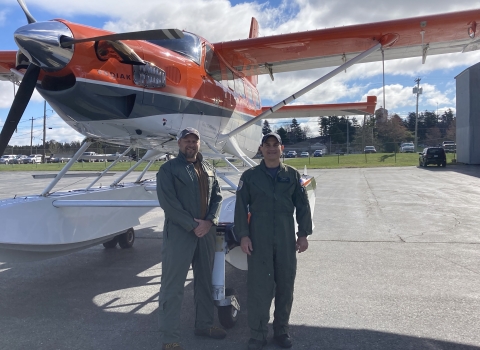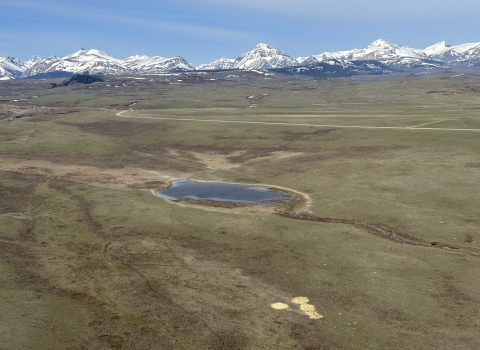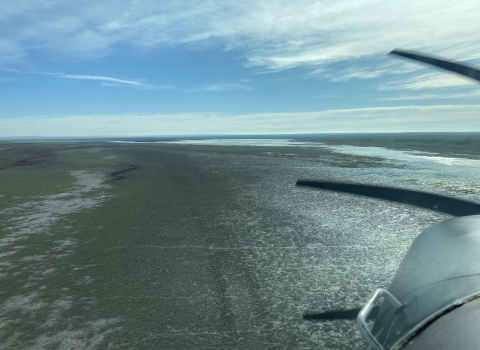Crews of the North American Waterfowl Breeding Population and Habitat Survey are often at the mercy of the weather, much like the very waterbirds and waterfowl they survey. Eyeing conditions obtained from satellite images and waiting on reports from other biologists on the ground, crews use every bit of information available to plan on when to take-off in the spring and begin counting birds.
In Alaska, break-up and spring conditions are as varied as the habitat being surveyed, lending to a wide spectrum of temperatures and creating challenges for the crews as they try to navigate thousands of miles of terrain.
This year, starting in southcentral Alaska, the crew of Dr. Heather Wilson (pilot-biologist) and Wade Schock (observer-biologist), found pristine conditions on the Copper River Delta and boreal forest of the Kenai Peninsula and southern Mat-Su Valley. Further north, the crew of pilot Brett Nigus and observer Tamara Zeller began their surveys in interior Alaska where trees were already leafed out, birch pollen filled the air, and waterfowl were abundant.
Cold temperatures and delayed break-up of winter ice on waterbodies in western Alaska gave pause to the survey for a few days while the crew waited for the longer days of sunshine to work its magic.
Despite ice remaining on many lakes, the snow-free tundra welcomed returning geese and other waterbirds who were ready to initiate nesting. Moving north, winter was still evident as ice chunks smashed into each other while being swept along by underlying currents in Kotzebue Sound. However, the chilly winds and icy lakes did not deter the birds!
Returning south to warmer temperatures and sunshine, the survey wrapped up over Nelchina, an area with views of the Alaska range and Talkeetna and Wrangell mountains. Crews were happy to report excellent habitat conditions for waterfowl and waterbird production in Alaska and the Yukon Territory!


